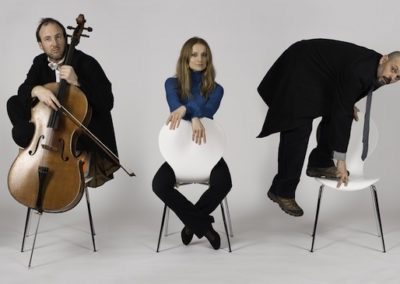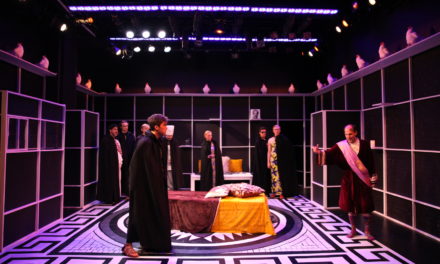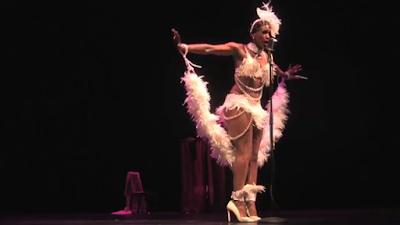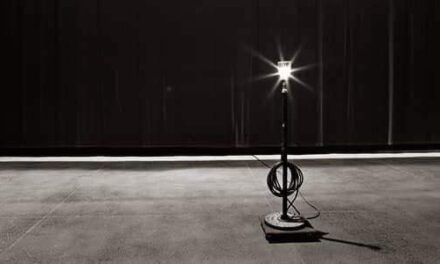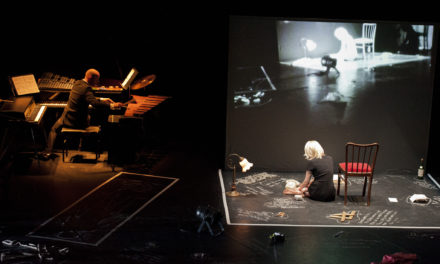In a way, communism has always been playing on the masses. There are endless things hidden within the people – power, union and also a great deal of herd mentality. Matei Visniec’s What Shall We Do With the Cello? – performed by Atelier Theatre Studio as part of the Vault Festival 2017 – delicately opens a window into the hearts of three people challenged by resistance, individuality, and slow but ceaselessly creeping change. And under the direction of Vasile Nedelcu, and performing at The Vault – a venue tucked underneath the railway arches of Waterloo – the company couldn’t have found a more suitable atmosphere to show the audience the unreal reality of the self-versus-everybody-else in the communist era.
Most people perhaps hardly notice just how much we wait for something (or someone) during our lives. Without a doubt, there’s a delicate etiquette to waiting: you mind your own business, don’t disturb others, and just wait your turn like everyone else. Yet, The Man with the Cello (Nick Allen) defies all these unspoken rules, playing his instrument as if there’s no tomorrow. But he’s not alone – there are others in the waiting room – The Woman with The Veil (Simona Armstrong), The Old Man with the Stick (Mihai Arsene) and The Man with the Newspaper (Tudor Smoleanu). At first, they approach him with curiosity, patience, even acknowledging his commitment, though it’s agreed “they must pay him a lot” for this endless performance. But the longer he plays without any break the less they can understand him, or bear his overwhelming tunes – until it’s clear, it’s either them or him.
Just like music itself, What Shall We Do With the Cello? is elevating in its pure yet sophisticated simplicity. Given the plain set and the one act of a rainy day, there’s so much behind those buzzing notes, tinkling strings and sudden cries of the cello. The three heroes might seem likes stereotypes, loudly superficial at first, but just keep on waiting (like them), and their true and colorful characters will eventually burst out of their sealed, ‘comradely’ shells. In the middle of London, the cast’s undeniable Eastern European accents are not only refreshing but give a racy touch to the play. There are multiple, carefully laid nuances all around us, lending an increasing depth to the play – the changing intensity of the rain, the playful forms projected on the backdrop, imitating the movements of the strings (and the emotional state of our heroes) – even the layers of clothing worn by the cast.
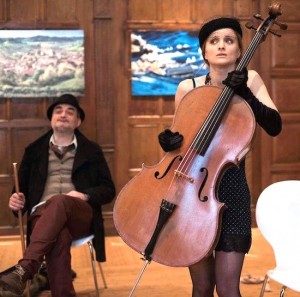
The only downside to the play was the lack of more direct reference to Romania. True the majority of the cast, the director, and the playwright were all Romanians, but the story could have happened anywhere in the Eastern Bloc. A more Romania-focused approach could have helped any Brits audience to connect more deeply with the work: it seemed at times most of them understood only the comic side of the story. Those with a better idea of communist daily life could have extracted much more from the play.
What Shall We Do With the Cello? Delicately wraps the essence of communism – using the herd mentality of people and the dulling everyday routines to control the mob – around the common human act of waiting. But there’s just one problem in relying too much on the masses. If just one breaks step (like The Man with the Cello) then the change – be it liberating or terrifying, it’s something we’ve secretly been waiting for – will knock on, relentlessly, to the rest of them as well.
This article originally appeared in Central and Eastern European London Review on February 13, 2017, and has been reposted with permission.
This post was written by the author in their personal capacity.The opinions expressed in this article are the author’s own and do not reflect the view of The Theatre Times, their staff or collaborators.
This post was written by Kata Karah.
The views expressed here belong to the author and do not necessarily reflect our views and opinions.

